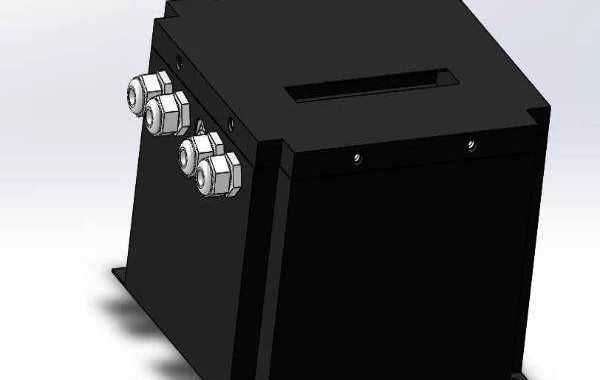With the large-scale deployment and construction of 5G sites, it is found that some sites are difficult to arrange and install due to factors such as narrow space and load-bearing, and the harsh operating environment of the site is not conducive to the operation of lead-acid batteries. The lithium ferro phosphate battery is small in size, large in capacity, excellent in high temperature resistance, and has no overdischarge problem, which can make up for the shortcomings of lead-acid batteries. Here is the structure and principle of iron lithium batteries.
1. The structure of lithium ferro phosphate battery
Lithium ferro phosphate battery is referred to as lithium iron battery. LiFePO4 with olivine structure is used as the positive electrode of the battery. It is connected with the positive electrode of the battery by aluminum foil. Pass, on the right is the battery negative electrode composed of graphite, which is connected to the negative electrode of the battery by copper foil. Between the upper and lower ends of the battery is an electrolyte, and the battery is hermetically sealed by a metal casing.
When the lithium ferro phosphate battery is charged, the lithium ions in the positive electrode migrate to the negative electrode through the polymer separator; during the discharge process, the lithium ions in the negative electrode migrate to the positive electrode through the separator. and named.
2. Charging of lithium ferro phosphate battery
When the lithium ferro phosphate battery is charged, under the action of the electric field force, lithium ions enter the electrolyte from the surface of the lithium iron phosphate crystal, pass through the separator, migrate to the surface of the graphite crystal, and then embed in the graphite lattice. After lithium ions are deintercalated from lithium iron phosphate, lithium iron phosphate is converted into iron phosphate.

3. Discharge of lithium ferro phosphate battery
During discharge, lithium ions are deintercalated from the graphite crystal, enter the electrolyte, pass through the separator, migrate to the surface of the lithium iron phosphate crystal, and then re-intercalate into the lattice of the lithium iron phosphate.
The nominal voltage of the lithium ferro phosphate battery cell is 3.2V, the single cell charging voltage is 3.7V, and the discharge termination voltage is 2.5V. The battery module consists of a battery cell and a battery management system (BMS), usually 15 or 16 cells. The monomers are connected in series to form a -48V battery module, 15 cells are recommended.
4. Application of lithium ferro phosphate battery in 5G and big data scenarios
Advantage:
High power density, small size and high cycle times;
Good safety, even if the lithium ferro phosphate battery is damaged inside or outside the battery, the battery will not catch fire and explode; the lithium ferro phosphate battery will not release oxygen at a high temperature of nearly 500 degrees;
lithium ferro phosphate batteries are especially suitable for applications in small capacity and access levels.
Shortcoming:
LiFePO4 batteries should not be used as bare cells, and BMS battery management must be configured;
Lithium ferro phosphate batteries should not be used as high-voltage backup battery packs;
Lithium ferro phosphate batteries should not be used as single large-capacity battery packs; from the pilot application of China Telecom in 2010, iron-lithium batteries are poorly matched, and due to the different internal resistances of the batteries during use, the balance between batteries is very poor. , need to configure the equalization circuit.
Lithium ferro phosphate batteries have the advantages of high working voltage, high energy density, long cycle life, good safety performance, low self-discharge rate, and no memory effect. They are the most popular battery types on the market.








